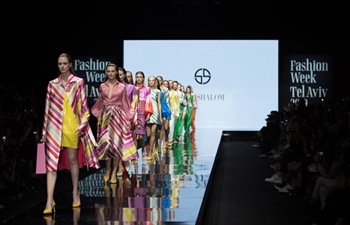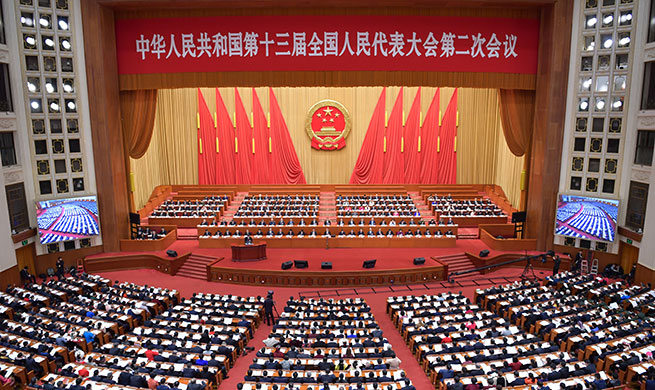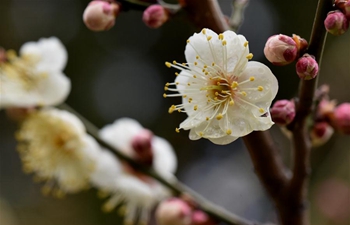by Nick Kolyohin
JERUSALEM, March 12 (Xinhua) -- Israeli designers at the ongoing Tel Aviv Fashion Week are looking forward to working with China by adding Chinese elements into their designs as they see great prospects in the Chinese market.
"Chinese people are very interested in and very curious about what's happening on other fashion scenes around the world, so I'm sure that they will have a lot to find over here," said Viktoria Kanar, head of International Relations of Tel Aviv Fashion Week.
The Israel's leading fashion event is being held in Tel Aviv from Sunday until Wednesday with 15,000 participants, including nearly 30 brands and designers.
It is the seventh time Israel hosts the Tel Aviv Fashion Week. The first time was in the year 2011 as a private initiative of Israeli producer Motty Reif, who since then runs this event almost every year.
In 2019, Israeli Ministry of Economy gave an official sponsorship to the fashion event, as part of its efforts to promote Israeli made industry in all the sectors.
Kanar said there are a lot of opportunities for cooperation between fashion creators of China and Israel.
For example, Israeli designers, especially young, "have a lot of really cool streetwear designs and the cool Chinese people are very into it," said Kanar.
Kanar said there is also much Asian influence on collections of Israeli designers, who eye on selling their clothes to Asian market.
Yarden Hanuka, a student at Shenkar College of Engineering and Design, told Xinhua "the Chinese design is amazing, and it is a big inspiration for Shenkar."
"We take inspiration from local architecture in China," said Hanuka.
Shenkar College of Engineering and Design is usually ranked among 15 best fashion schools around the world.
The department of fashion design at Shenkar presented on Monday a unique reproduction project of historical garments from past centuries as part of the fashion week.
Leah Peretz, head of the department of fashion design at Shenkar, told Xinhua that some student designers at the show took inspiration from Chinese elements.
"Some students come with an idea of blue and white like Chinese porcelain. One student took inspiration from Chinese children that she saw in China," said Peretz.
Peretz said that Shenkar would love to have more academic contacts with fashion schools in China. Shenkar already has 18 graduates working for a company in Hong Kong.
Globalization makes it easers for fashion designers to find their suitable market in the world and search for perfect fabrics and factories to use for creating brand new clothes, Kanar said.

















